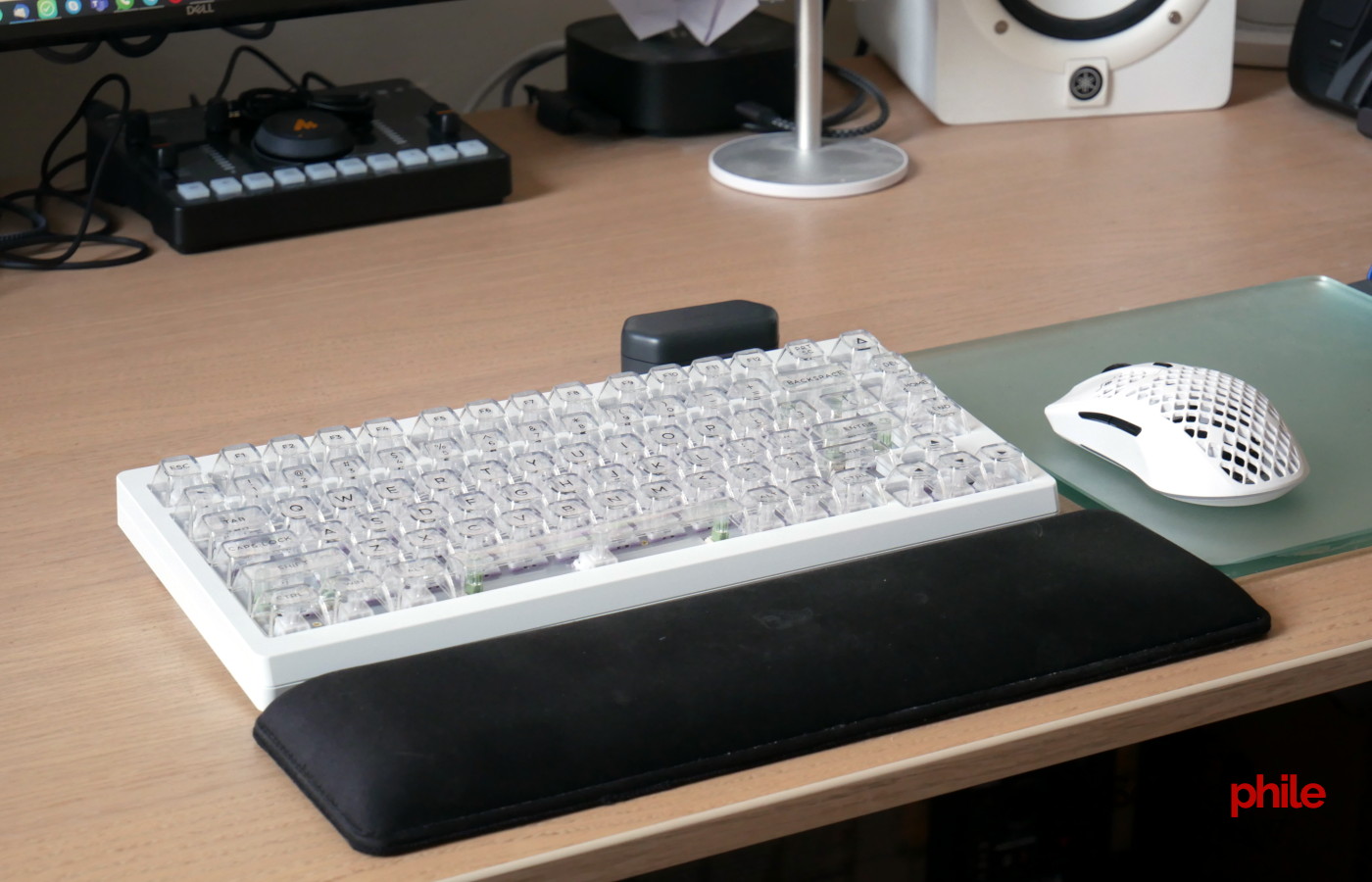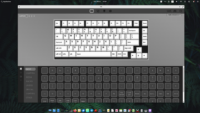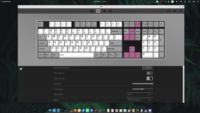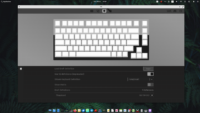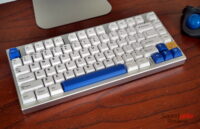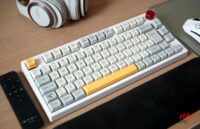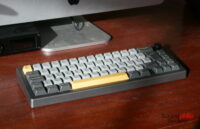Some keyboards are just built differently. The KiiBoom Moonshadow 81 is definitely among those, thanks to its massive and heavy aluminium frame. The company puts a lot of emphasis on the way it is built, too, as the chassis is made of two pieces and is really easy to open. Overall, the Moonshadow 81 looks, feels and sounds like a premium board – let’s see why.
Disclaimer: I received a free unit directly from KiiBoom for the purpose of this review. It retails for $199 on their website.
TL;DR: recap
| Pros |
Cons |
| + Superb build quality
+ Compact and light + Very comfortable to type on + Sounds good |
– New gasket mount approach doesn’t yield better results
– Stabilisers are very dry – Battery LED when there is no battery – Status LEDs’ light leaks around them – LED lighting emits a high-pitched whine – Pricey |
Rating: 7/10
Packaging & Accessories
I’m not usually one to take packaging into account too much, but in this case I have to say that KiiBoom did a fantastic job. The keyboard comes in a cardboard box and is held in place by abundant foam; it comes covered in a microfibre cloth which envelopes the keyboard entirely. The accessories include a keycap puller, a switch puller and two switches to test out the board – what you are buying is just the board itself with no keycaps nor switches.
Design & Build
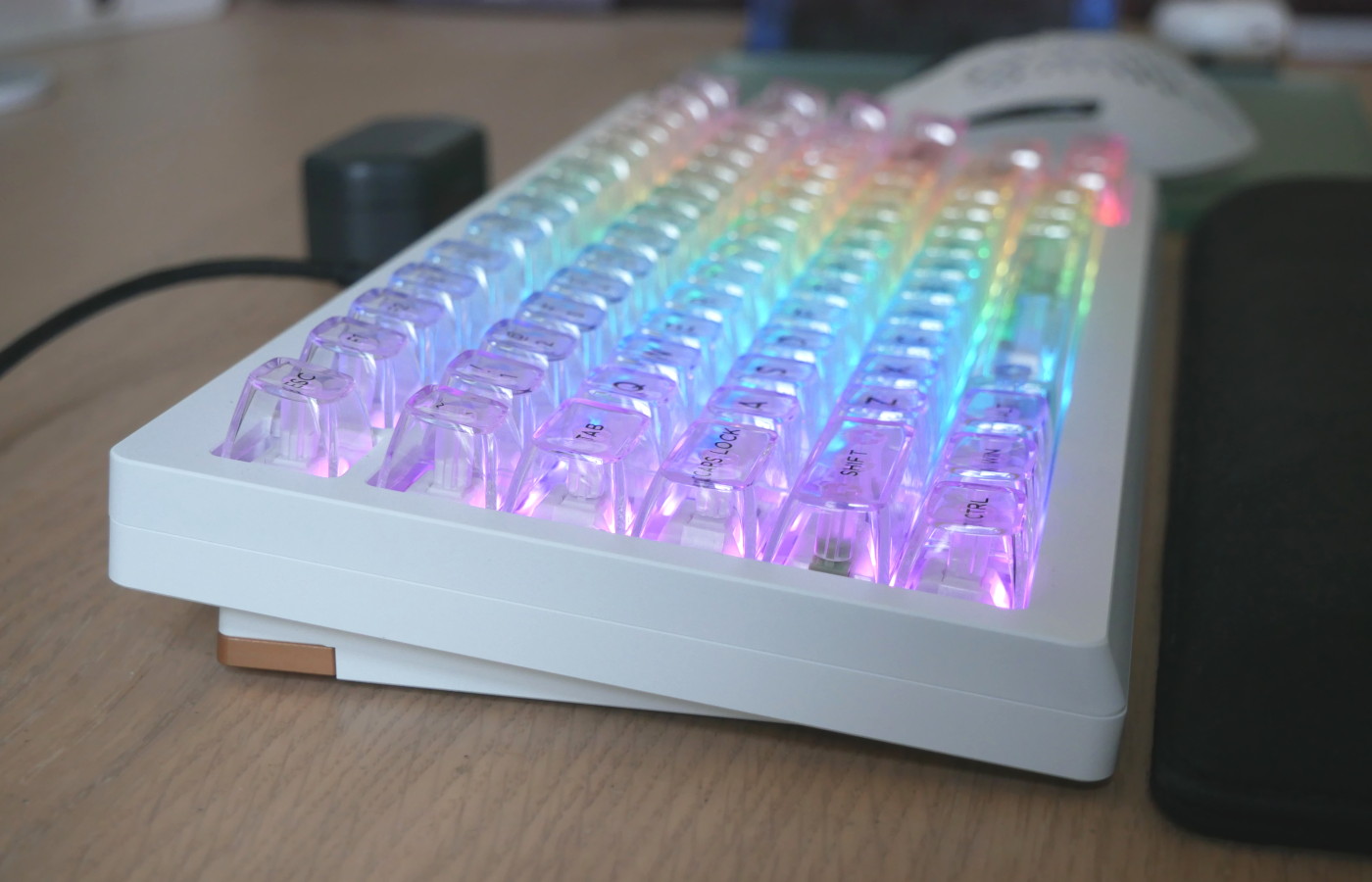
The KiiBoom Moonshadow 81 isn’t a keyboard for those who like a minimal frame. It is quite bold and it is not exactly what I would call “compact”, despite its 75% layout which inherently makes it smaller than full-size or TKL layouts. The chassis has quite a generous framing around the keys, which makes the keyboard look larger than it actually is, but on the other hand it also makes it look sturdier.
There is a USB-C port on the back, which is the only connection supported by the Moonshadow 81; on the bottom there’s a triangular, copper-coloured plate with the KiiBoom logo etched on it and coloured in shiny black. There are also four rubber feet that hold the keyboard still – if the weight alone isn’t enough.
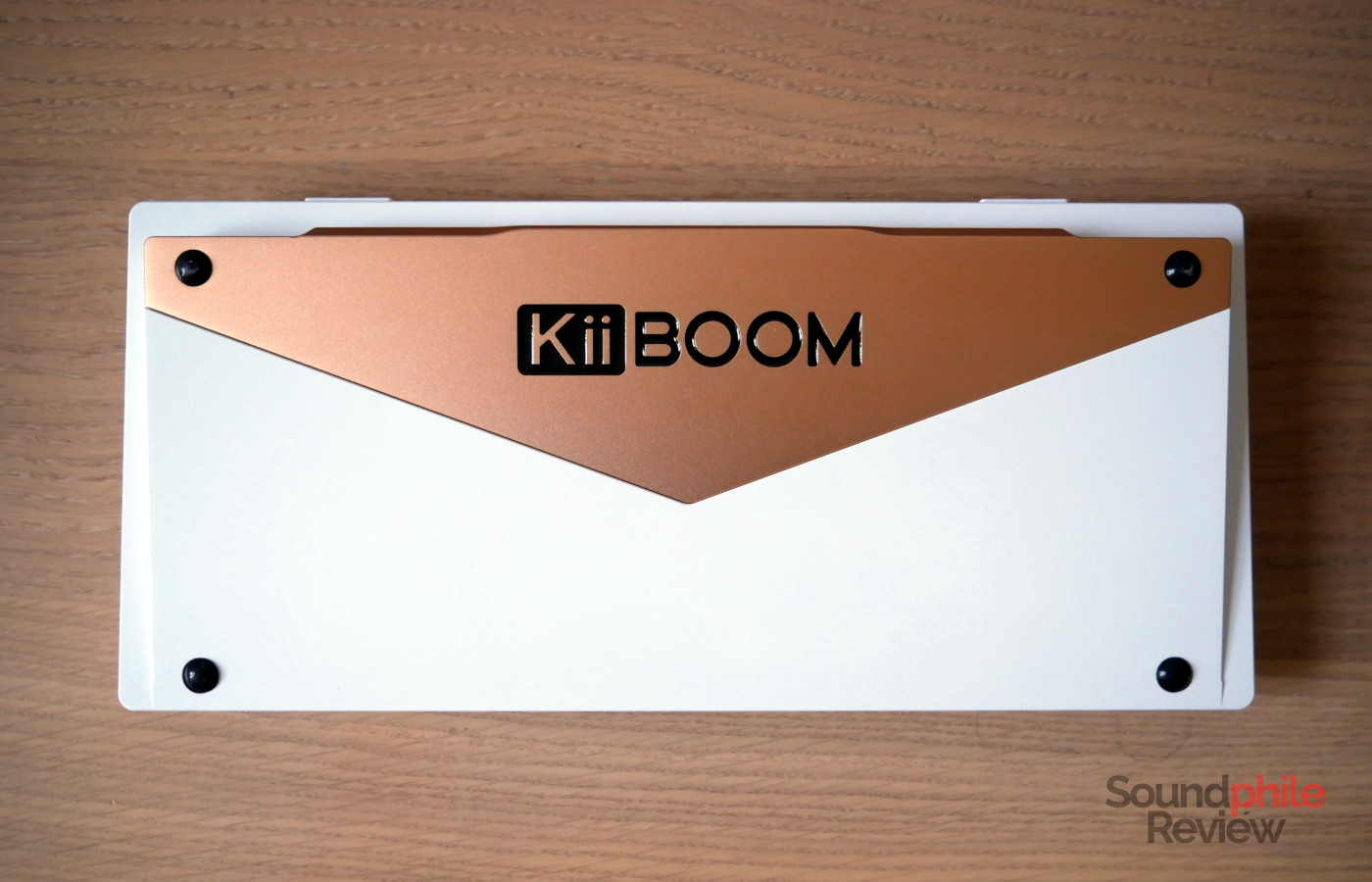
One thing to note about the Moonshadow 81’s build is, in fact, that it is heavy. This keyboard weighs ~2 kg (2097 g with all the switches and the keycaps installed!), which is very heavy even for a full-aluminium chassis. It surely won’t move on your desk, no matter how furiously you type on it!
The aluminium chassis is covered with a very smooth layer of paint, which is white in the case of the unit I received (but there are black, purple and green options as well). This finish looks and feels absolutely gorgeous. More generally, the KiiBoom Moonshadow 81 looks and feels like a premium board (which, in fact, it is).
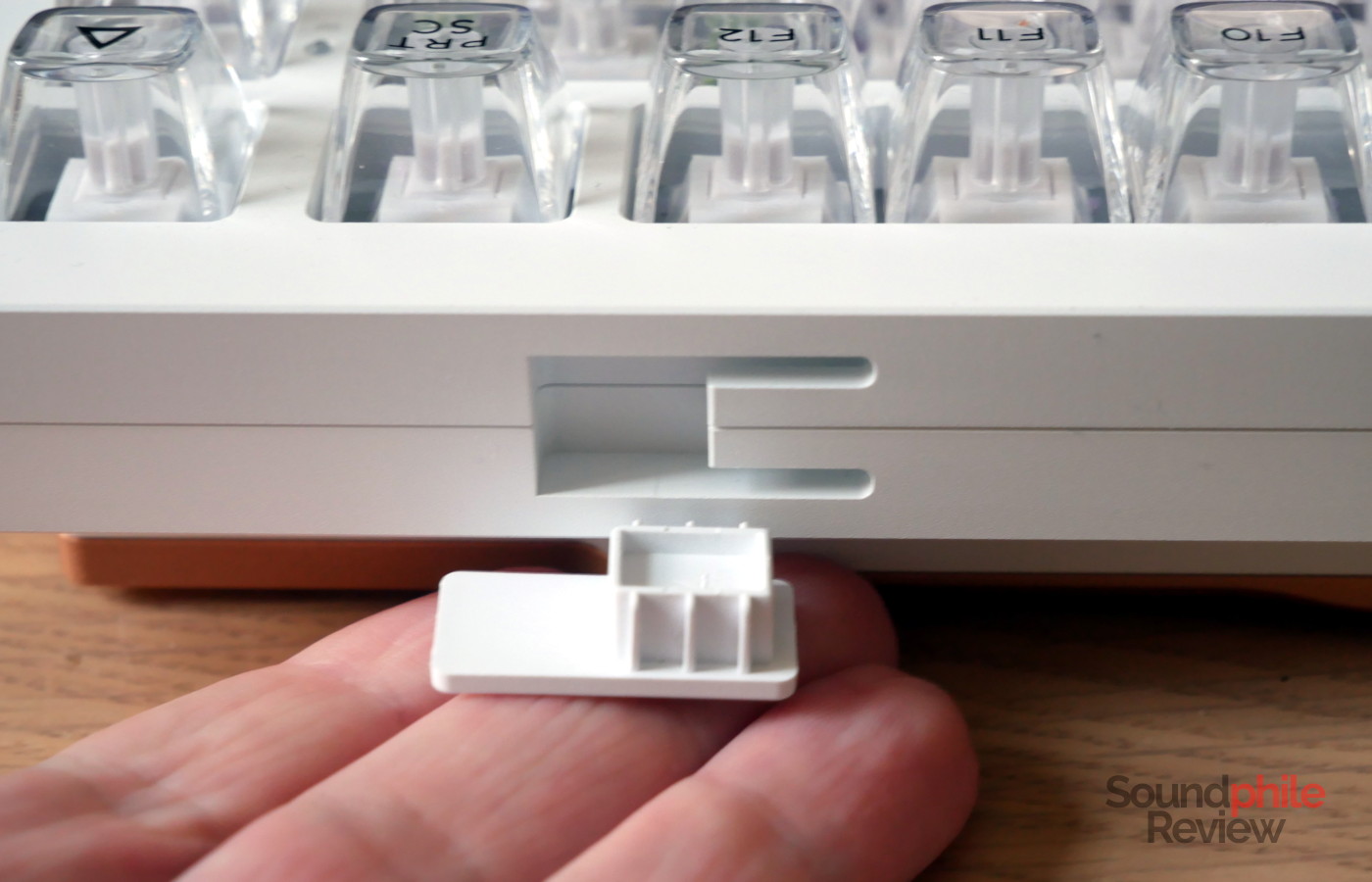
There is a square metal plate in the top right corner which is exactly the same size as the hole to its left that hosts a switch – and this is because the metal plate can, in fact, be removed to house an additional switch. In order to do this, you need to remove the plastic bits on the back by sliding them outwards, then push the bottom of the top half upwards so it slides out of the locking position, then lift it up. At this point you can easily remove the cover and access its back: you need to remove just two screws to make the plate come off. Follow the procedure above in reverse order and you’ll be able to use the keyboard with an additional key.
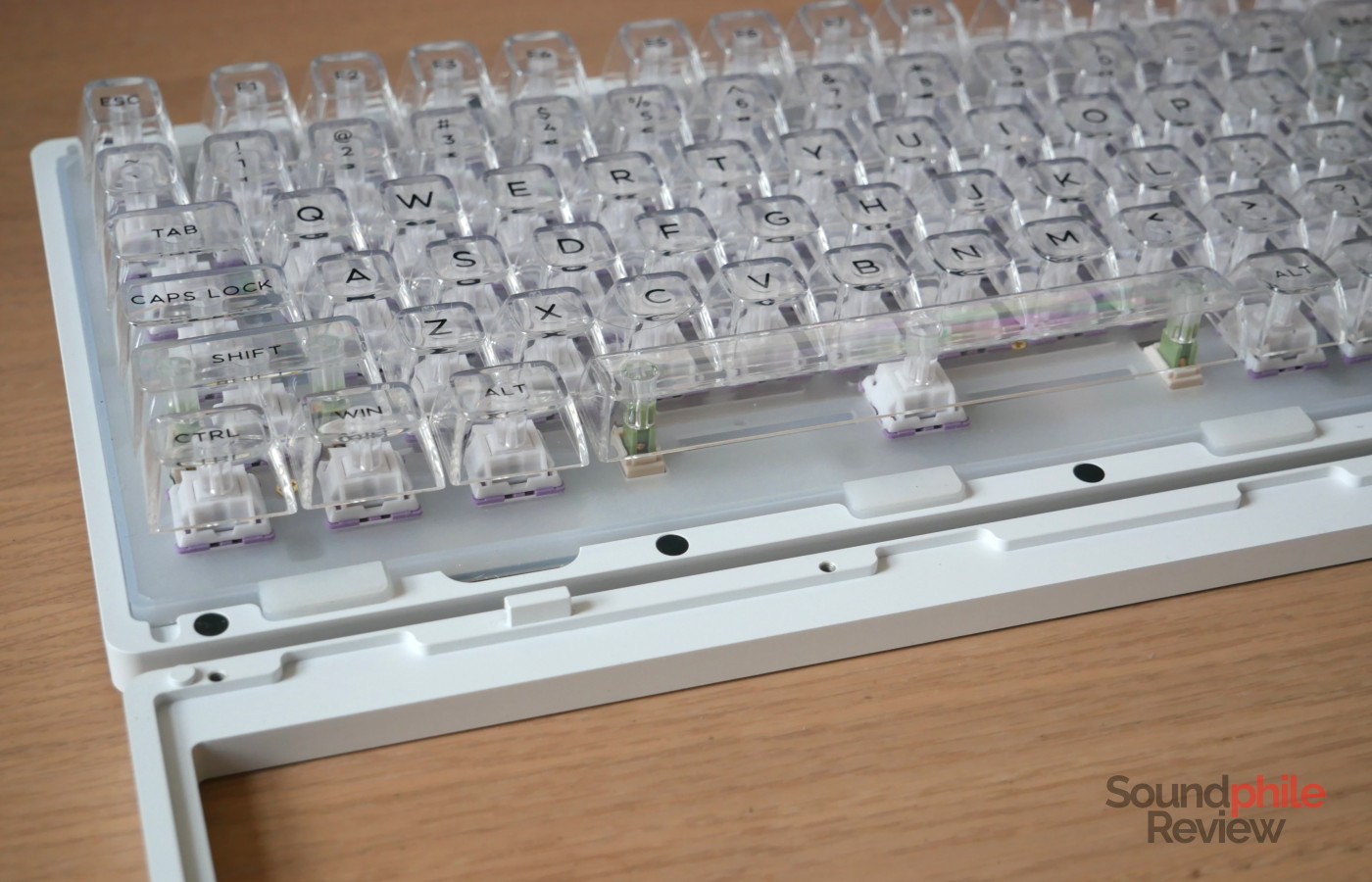
As you can probably tell from the description above, disassembling the keyboard is really easy. It took me a couple of minutes on my first try, but once I had learned how to do it I only needed 30 seconds. You won’t really need to do it often, but it comes quite handy to clean the board from dust and debris.
The keyboard only comes in the ANSI layout, so there are unfortunately no options for those among us who prefer ISO (count me in that number!). The switches are all hot-swappable and support both 3-pin and 5-pin types.
The Moonshadow 81 uses a gasket mount, but it’s a bit different from the usual as there is some rubber-like material that covers the bottom of the tabs which then lie on the bottom of the case.
The LEDs are South-facing to enhance compatibility with Cherry-profile keycaps.
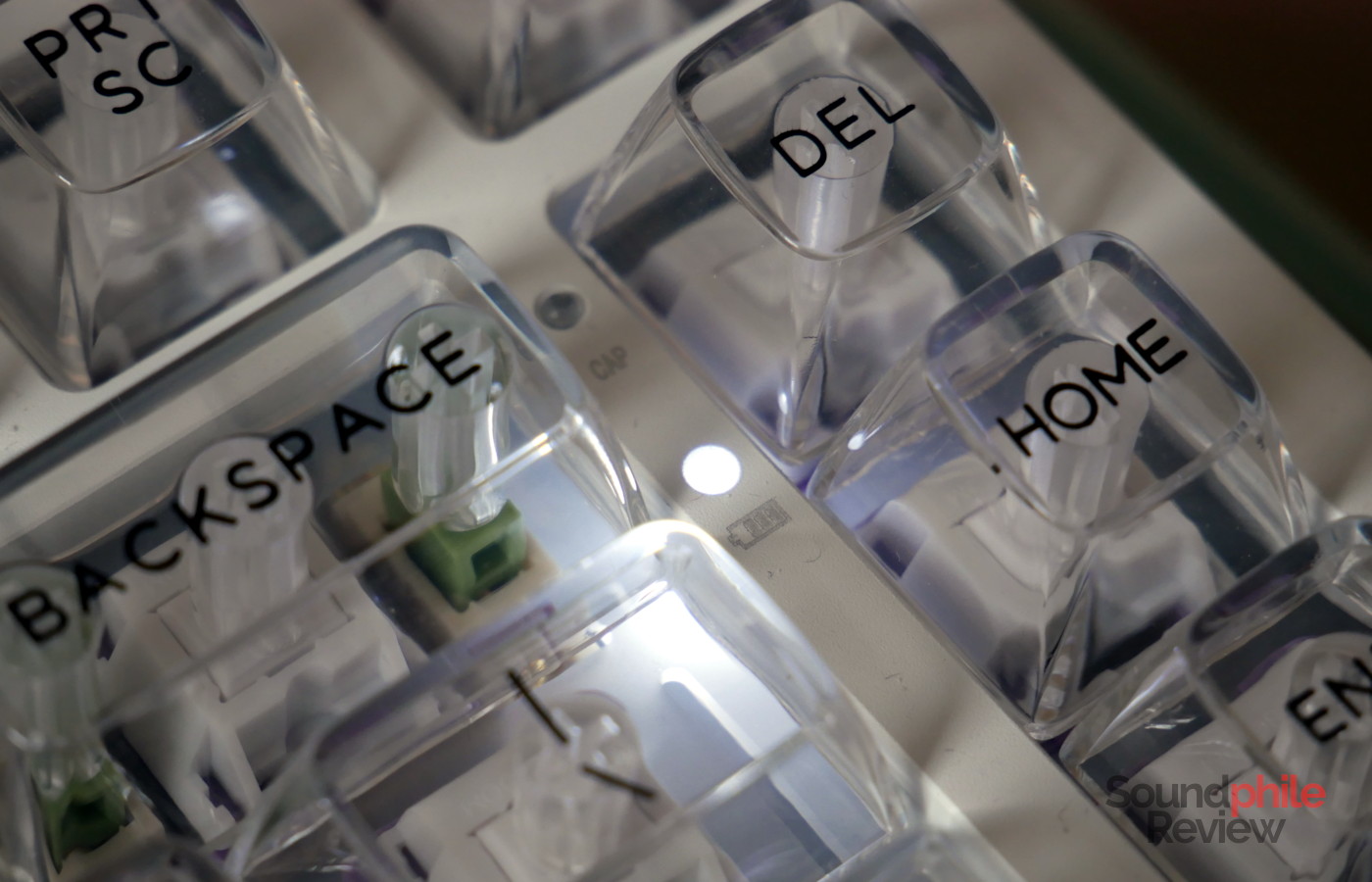
Although the Moonshadow 81 does not have a battery, for some reason there is a battery status LED that lights up as soon as you connect the keyboard to a computer. This LED is also not isolated from the rest of the keyboard, so that means that you can clearly see the light leaking out if you turn off the LED backlight on the keys. This is a minor detail, but it is exactly the kind of detail that I expect to be taken care of on a $200 board – especially if it’s a bare-bones one where you have to spend additional money for switches and keycaps.
Functionality
The KiiBoom Moonshadow 81 only supports connection through USB. KiiBoom says that the keyboard can be programmed via both QMK and VIA; they provide an application, but it is only available for Windows. In order to get the VIA software to detect the keyboard on Linux, I had to enable the V2 definitions and load the file that KiiBoom provides with the Windows software (as VIA does not detect the keyboard out of the box, and in fact I couldn’t find it in the list of compatible ones). This makes it a bit more complicated than it should to customise the keyboard under Linux and macOS, but it is indeed doable.
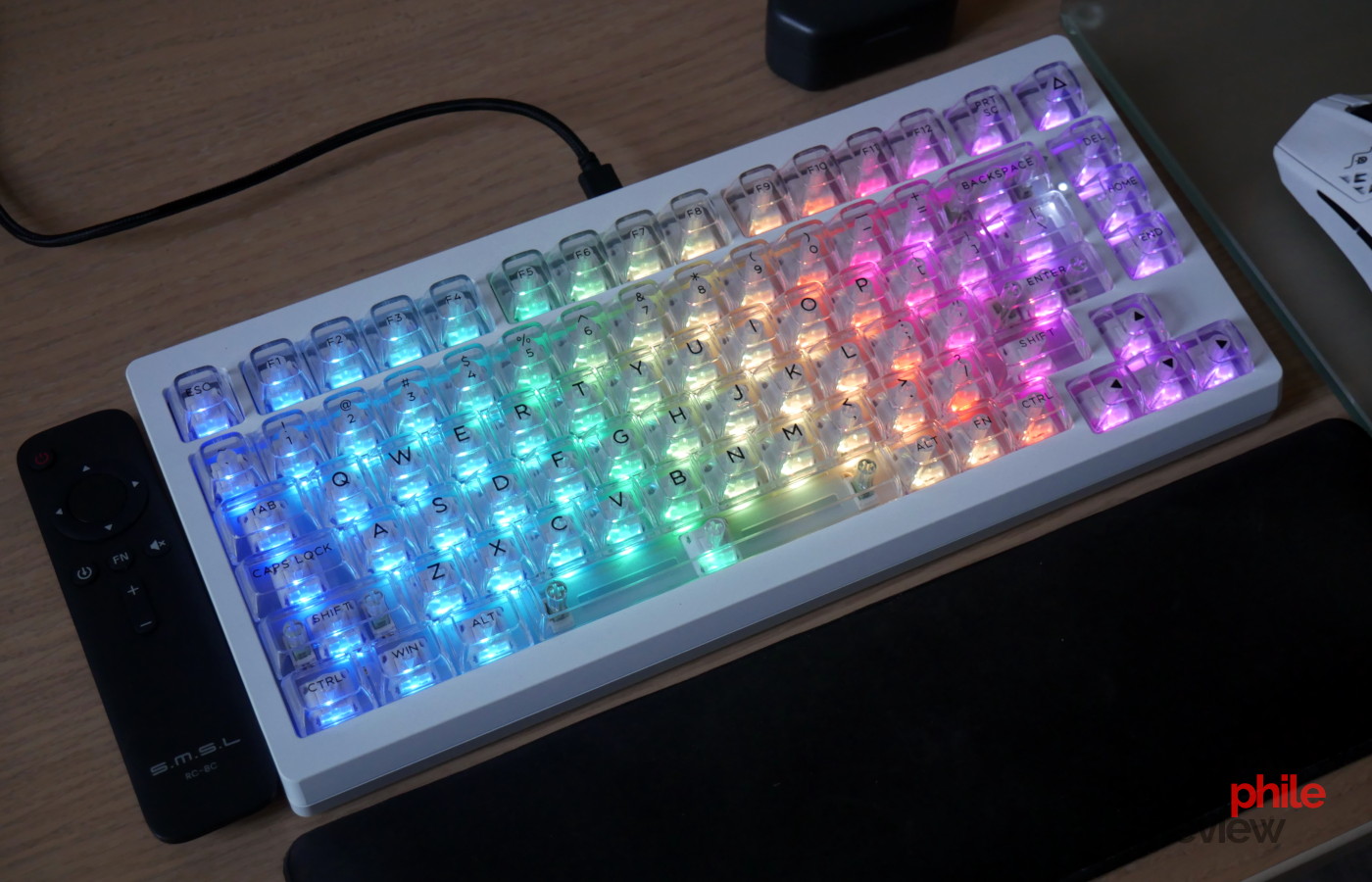
When the LED lighting is turned on, the keyboard emits a constant, high-pitched whine which I find really fatiguing. Turning the lighting off makes the sound disappear completely.
Thanks to the fact that the connection happens through USB, there is virtually no delay between when the key is pressed and when the stroke is registered.
The software KiiBoom provides is easy to use and allows you to customise the keyboard’s behaviour and functionality in depth; you can set various layers of customisation and reprogram every single key. The only issue I found is that the keyboard sometimes isn’t detected and I need multiple attempts before it is.
Typing
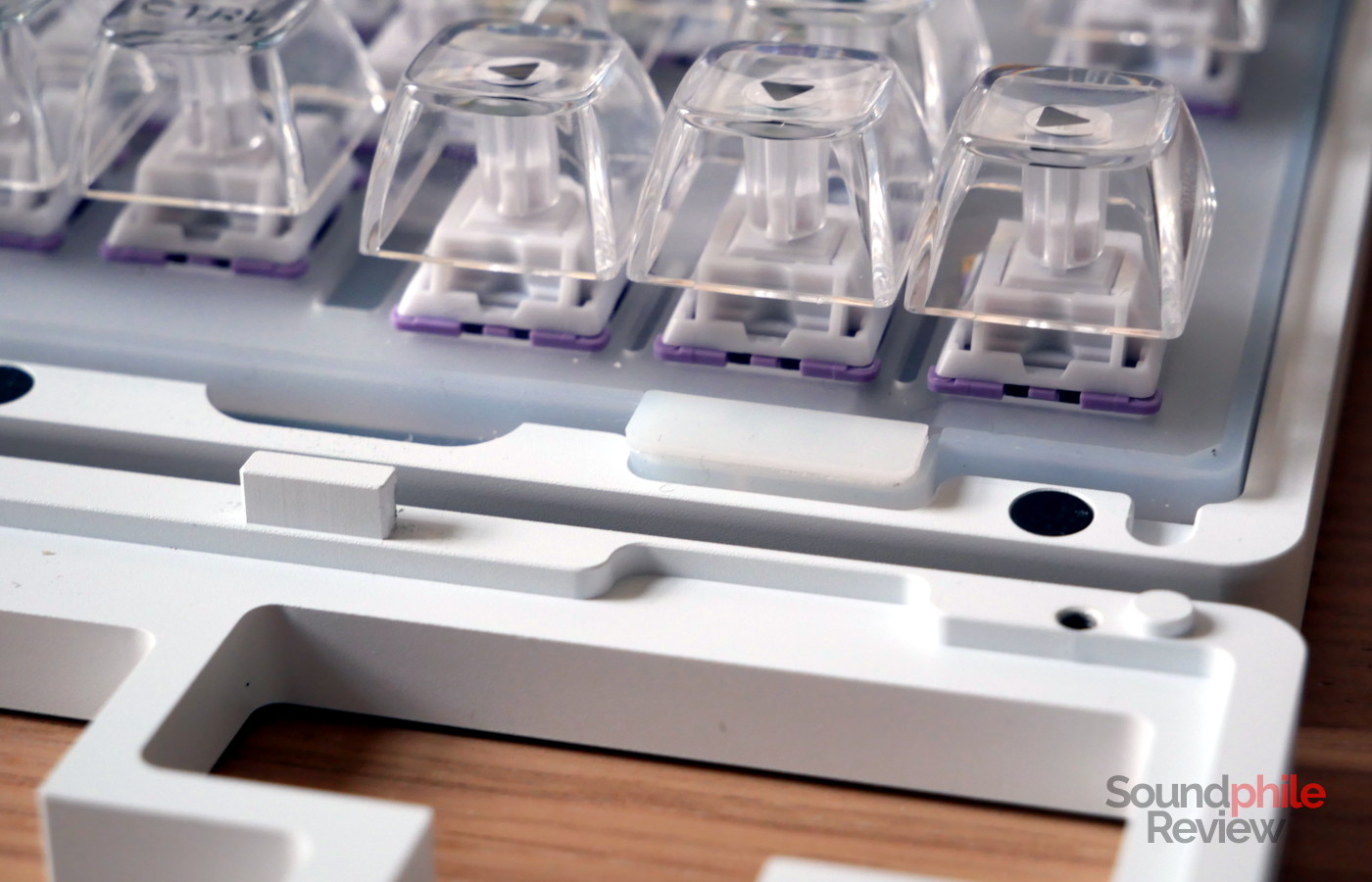
Again, the KiiBoom Moonshadow 81 comes as a bare board, with no switches nor keycaps, which gives you the flexibility to choose your own. KiiBoom kindly sent a full kit to allow me to build a complete keyboard. On top of the chassis, they sent their Taro Cream Milk switches as well as the transparent keycap set. I have actually used a set of Drop MT3 Camillo keycaps for the vast majority of time when trying out the keyboard (as well as when I typed this review!). My impressions are therefore dependent on this configuration and could vary with other switches and keycaps.
The attempt at innovating the gasket mount unfortunately didn’t bring significant results; the mount feels relatively stiff, with minimal play once you bottom out the switch. The Moonshadow 81 feels halfway between a tray mount and a gasket mount, which actually isn’t bad at all but kinda defeats the point of having a gasket mount.
Although it comes down to a matter of habit, I have found myself making more typos than usual when using the Moonshadow 81 with the Taro Cream Milk switches. This is possibly due to the fact that the switches require you to almost bottom out the keys to register the press, which I am not used to do. The feeling is actually really good as there is a definite, clear tactile feedback when you press the keys, but the travel required to actually type is a lot more than that of e.g. the Gateron Brown or, looking at linear switches, the Epomaker Flamingo (which I tried on the Epomaker TH80 Pro).
This matter aside, the overall typing experience is very nice, thanks to the very good sound, the good (but not excessive) stiffness and the excellent smoothness of the switches. Although they are not lubed, they feel very smooth and with little stem wobble.
I really like how the Moonshadow 81 sounds, as it is relatively silent but with a nice deeper “thock” sound to it. The only exceptions are the keys with a stabiliser, which have a higher-pitched, “drier” sound due to the stabilisers themselves. This is especially noticeable with the space bar. The stabilisers are indeed the weak point of the keyboard, as they are quite inconsistent in how they feel and they sometimes feel like they get stuck – this is something I have noticed especially with the backspace key, which sometimes feels like it is stuck halfway when coming backup after I pressed it.
Final Thoughts
The KiiBoom Moonshadow 81 is definitely a keyboard that stands out from the crowd, if anything due to being quite massive – as in, with a lot of mass. It is a very well designed keyboard with an interesting mechanism to access its innards and it is built like a tank. It also sounds authoritative and deep, which is what many enthusiasts are looking for. Unfortunately, though, there are also some negative bits to it: the reinvented gasket mount doesn’t deliver improvements and, in fact, it is stiffer than most gasket mounts; the stabilisers are very dry; the LED lighting has a fatiguing whine attached to it; the status LEDs aren’t properly shielded. While none of these is a deal-breaker, they are issues which I don’t think should be there on a board that costs $200 – without including switches and keycaps.
KiiBoom puts a lot of emphasis on the mortise and tenon system they came up with to allow for easy opening up of the case, but I feel like they could and should have focused on improving other areas instead. The mechanism works very well and does indeed make it easier to access the parts, but in my opinion it is less useful than improvements in the areas I pointed out.
Everything considered, then, the KiiBoom Moonshadow 81 is a very good keyboard, and one which is an absolute pleasure to type on, but at $200 it faces stiff competition which might actually end up having the upper hand.

